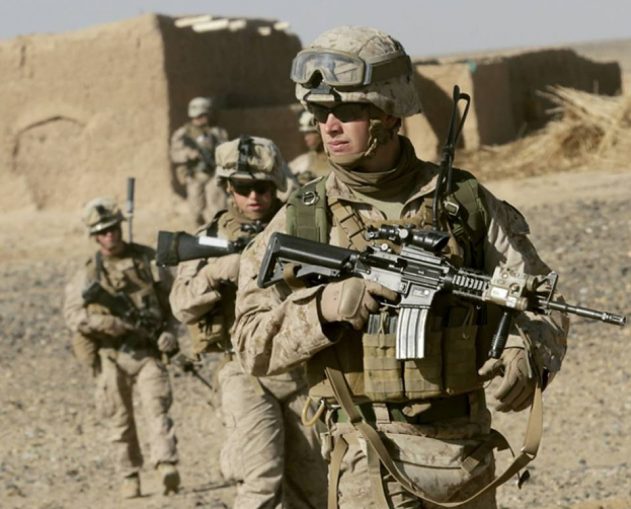
The battle famously depicted in the movie ‘Black Hawk Down’ (based on Mark Bowden’s book) took place 25 years ago (October 1993) and the U.S. remains engaged in a conflict in Somalia now—in 2018—and likely for the foreseeable future, like reported by thecipherbrief.com.
The warlords remain, to a lesser degree, and the government is still unable to provide consistent services and security. Al-Qaeda has long been a meaningful player in Somalia, from the earliest days of the group, and is now represented there through its affiliate al-Shabab. Al-Shabab, or “the Youth,” has proven to be a well-entrenched insurgent organization capable of launching spectacular terrorist attacks while withstanding a steady campaign of U.S. and African Union-supported military operations over the past decade. The counterterrorism campaign in Somalia is among the most intractable and difficult of the many theatres where the U.S. military has remained active in the post-9/11 era.
On December 17, the U.S. Defense Department (DoD) announced that the military conducted 6 airstrikes in Somalia. The U.S. reported that 62 al-Shabab fighters, and no civilians, were killed in the strikes. The strikes brought the total number of publicly reported U.S. airstrikes in Somalia to 45; this is 14 more than what had been the previous record number of strikes in a year, 31 in 2017. The operational tempo has increased dramatically since the Trump administration revised rules of engagement (ROE) toward a more ‘preemptive’ posture. The December 17 announcement noted that the six strikes were intended to ‘prevent al-Shabab from using remote areas as a safe haven to plot, direct, inspire, and recruit for future attacks.’ There is growing concern that Somalia could provide al-Shabab, as well as other terrorists, including some linked to the so-called Islamic State, with a sanctuary to plan attacks. Just last week, a Somali national was apprehended by Italian counter-terrorism police in southern Italy and arrested on terrorism-related charges. The individual has been linked to the IS affiliate in Somalia, and was apparently in touch with an operational cell. Although details are still emerging, the suspect had downloaded several images of the Vatican. The conflict in Somalia has mostly remained within that country’s borders, with a few exceptions (including attacks in Kenya and Uganda), but that could be changing as groups seek to plot external operations aimed at the West from Somali soil.
The strikes targeted al-Shabab fighters in the south of the country, where the group has retained its capability to conduct devastating terror attacks as well as serve as the de facto government in rural areas outside the control of the government, which is mostly relegated to Mogadishu, Somalia’s capital. While the scale of the conflict is far less than what the U.S. is grappling with in Afghanistan, the underlying realities are similar. The U.S. is attempting to improve host-nation capabilities with a strategy that aims to help the government increase security and stability, a monumental challenge in a collapsed state like Somalia. As in Afghanistan (though with far fewer resources applied), the mission is almost generational in its timeline and consistently met with crippling setbacks. The U.S. has, according to its estimates, killed over 300 al-Shabab militants in 2018, although the group still boasts thousands of fighters. The banality of body counts aside, militants continue to join al-Shabab because of the group’s commitment to the ideology of ‘bin Ladenism,’ but also because the government remains an attractively weak target.
The U.S. is not alone in its efforts to support Somalia, nor is it alone in struggling to generate lasting positive momentum. The African Union Mission in Somalia (AMISOM) was initially created in January 2007 with a six-month timeline. AMISOM’s mandate has been renewed continually as the conditions on the ground, even in the heavily patrolled capital, remain tenuous. In October 2017, al-Shabab conducted the deadliest terrorist attack in Somalia’s history, killing more than 500 people in a twin suicide bombing using vehicle borne improvised explosive devices (VBIEDs) in Mogadishu. The inability of the government to meaningfully and sustainably expand its control beyond the capital, and the capability of al-Shabab to conduct sporadic, yet devastating terror attacks in urban areas while also maintaining strength in the countryside, is similar to Afghanistan and the struggles of the externally-supported central government in Kabul. The U.S. has not signaled that it will dramatically increase the numbers of its ground forces in Somalia, intending instead to increase the operational tempo and strike/raid authorities of those forces. An increase in air strikes will, at least in the short term, diminish the ability of al-Shabab to gather and train en masse. Yet, without larger social and political improvements, it remains a myopic approach in the long-term. Ramping up airstrikes will also certainly mean an increase in civilian casualties, further exacerbating human security issues in a country, also like Afghanistan, currently mired in its third consecutive decade of civil war, insurgency and wanton political violence.


